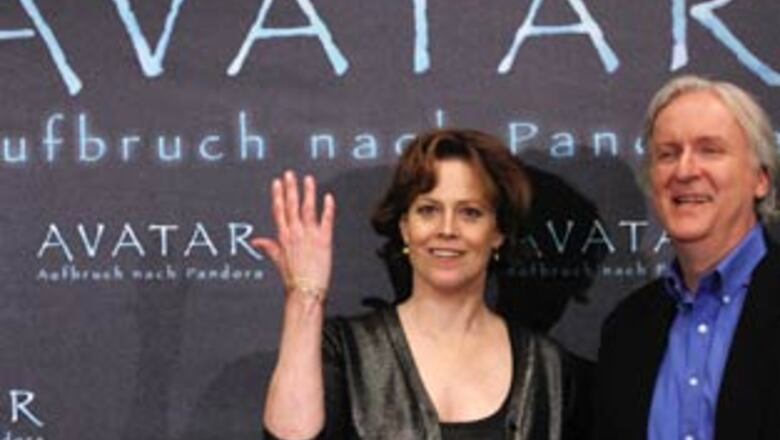
views
Paris: James Cameron's long-awaited Avatar, one of the most expensive films ever made, takes off this week in an awe-inspiring display of Hollywood power that has revolutionized cinematic special effects.
At a cost of about $400 million to make and market Avatar, the Oscar-winning director of Titanic has created a lush world of dense forest, floating mountains and tremendous creatures in a computer-generated spectacular that transforms much of the cast into giant, blue-skinned humanoids.
The movie, which premiered in London on Thursday and begins landing in theaters worldwide next week, represents a huge risk for the 20th Century Fox studio that backed it and is being watched closely in Hollywood for its impact on the future of movies, special effects and expansion of new 3D technology.
"It's absolutely cinema, but I think cinema redefines itself every few years with new techniques," said Cameron.
Beyond dazzling audiences with visual effects that plunge the viewer onto the planet Pandora 4.4 light years from Earth, Avatar provides a familiar mix of romance, action movie thrills and an old-fashioned battle between good and evil.
"The more fantastic the subject...the more recognizable and universal, the relationships and people need to be," Cameron said.
Avatar shows the forest-dwelling Na'vi fighting for survival against a rapacious colonial mining operation bent on moving them away and stripping their planet.
A crippled ex-Marine is chosen to make contact with the mysterious people as an avatar, a remotely controlled body, which allows him to move freely in the alien world where he falls in love with a Na'vi princess.
Science fiction techonology
What makes Avatar stand out, however, is the appearance of its three-dimensional forest scenery and the seamless interaction of the human cast with the animated world.
Rigging his actors with specially developed cameras to register every gesture and facial expression as they moved about a bare stage, Cameron and his technical team blended their images into the computer-generated world of Pandora.
"The science fiction of the technology was more science fiction than the story," said Sigourney Weaver, star of Cameron's film Aliens, who plays a scientist in Avatar.
"You're aware that a lot of work is going on around you, but you, the actor, just have the responsibility of being in the moment and being in the world," she said.
Cameron, who created many of the special effects with Lord of The Rings director Peter Jackson's studio WETA Digital, said the most daunting problem was to ensure the effects did not overwhelm the film and disconnect audiences from the story.
But in Hollywood, performances matter less than results at the box office, and the film industry is closely watching "Avatar" for its impact on film costs and the expanding of 3D technology.
For Fox, a unit of News Corp, the movie represents a huge risk because typically big-budget movies have a fan base from books or other material, like the Harry Potter movies.
Avatar has no built-in audience, and its effects are costly. A Fox spokesman said it required $237 million to make and $150 million to promote.
When Cameron made Titanic for Fox, he drew sharp criticism for its high cost, but the 1997 film made $1.8 billion at global box offices and remains the highest-grossing film of all time.
Last month, Fox studio boss Jim Gianopulos told Reuters he had "no doubt" of making a profit.
If Avatar is a big success in 3D, industry watchers expect more theaters to install the new technology quickly and more directors to make movies in the medium.
















Comments
0 comment